How to Optimize a Blog Post for Google's Featured Snippets
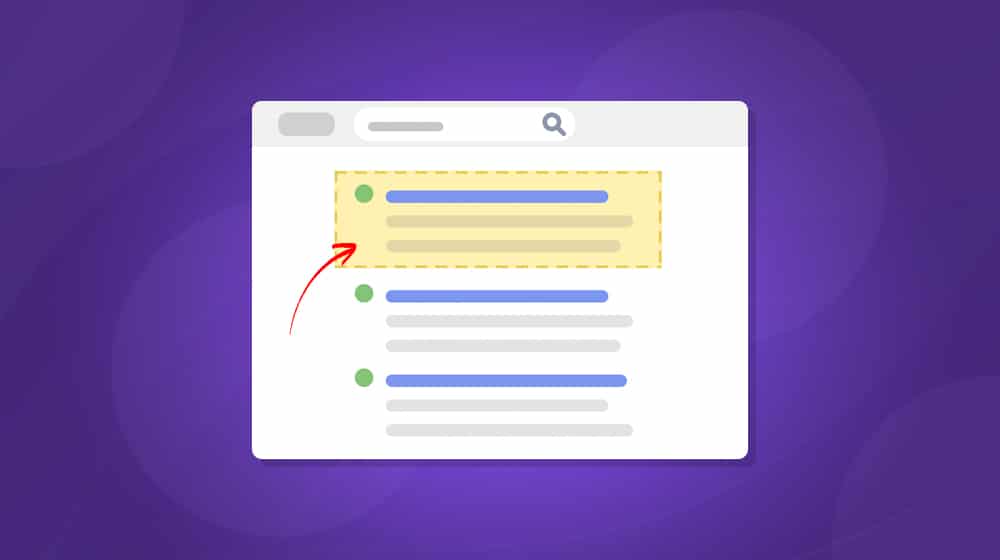
Take a look at this Google search for a moment.
Which search result is result #1?
It's down a bit on the page, the Wikihow article. It's below several other results. Starting from the top of the post and working down, you have:
- A YouTube video embed, with a segment of subtitles and the YouTube meta title.
- A People Also Ask box with half a dozen questions related to the subject.
- Several more video results from YouTube (depending on your location and Personalized Search results).
- The #1 organic search result.
You'll also see other infoboxes for other queries, like embedded maps, product listings, and ads.
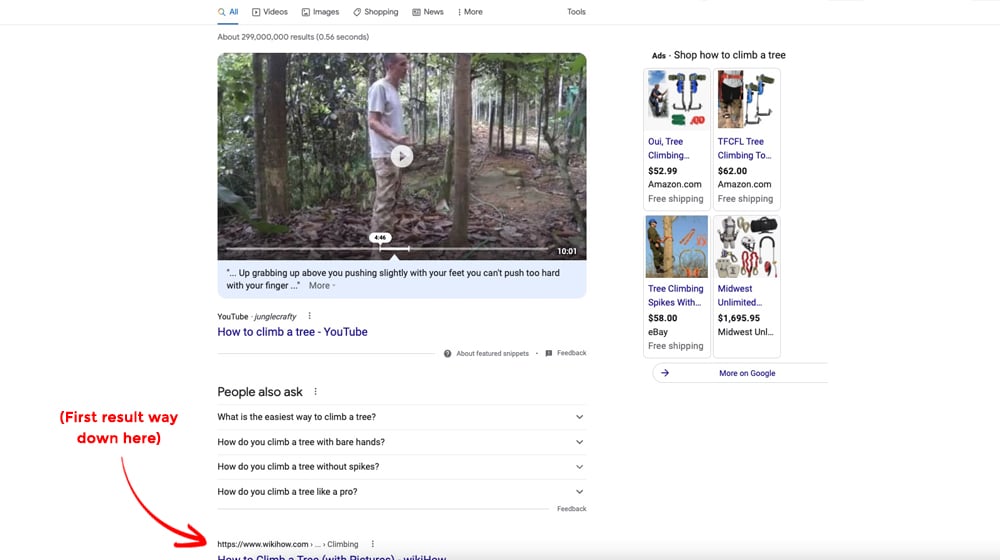
How valuable is a #1 search result, again? I'm pretty convinced that it's not nearly as important as it used to be because Google puts so many other pieces of information in the so-called "position zero" above even the most highly-ranked organic search result.
Some of this is info Google puts on every search, like the "People Also Ask" box. Others are dependent on the query. However, the one we're most interested in is at the very top. For our sample query, it's a YouTube video. For a different one, like this one, it's a segment of an organic post from the Content Marketing Institute.

This section is known as a Featured Snippet, and they appear for less than 10% of search results at the top of Google's search results. Marketers know them by several names:
- Position Zero / Position #0
- A Google Discover ranking
- Top box
- Answer boxes
These phrases can confuse new marketers and web admins, so I'll clear this up once and for all:
Let's dig into what featured snippets are and how you can better optimize your content to acquire them!
 30 Second Summary
30 Second Summary
You can get featured snippets, which show up above regular search results if you target informational queries and format your content well. You'll need your page to rank on Google's first page, and you should match your content to what users want - whether that's a paragraph, list, table or video. You can't directly request snippets, but you can improve your chances by finding keywords that already have snippets and creating better more targeted content. While snippets can boost visibility, they might reduce your click-through rate since users get answers directly in search results.
What are Featured Snippets?
A Google featured snippet is a segment of a piece of content closely related to your search that Google has deemed highly relevant and authoritative.
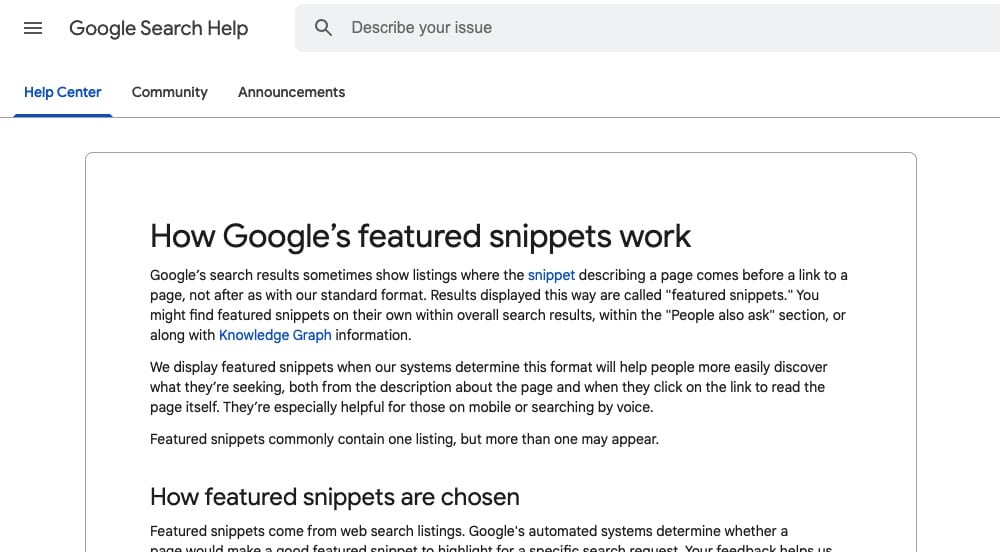
Here's what Google has to say about them.
"Google's search results sometimes show listings where the snippet describing a page comes before a link to a page, not after as with our standard format. Results displayed this way are called "featured snippets." You might find featured snippets on their own within overall search results, within the "People also ask" section, or along with Knowledge Graph information.
We display featured snippets when our systems determine this format will help people more easily discover what they're seeking, both from the description about the page and when they click on the link to read the page itself. They're especially helpful for those on mobile or searching by voice.
Featured snippets commonly contain one listing, but more than one may appear."
Sometimes, featured snippets answer the search query directly in the SERPs (search engine results page). Other times, they act as just enough preview of the content to encourage users to click through to see the whole thing.
The latter is the case with both of my examples. The tree climbing query is completely unhelpful beyond letting you know that the video in question has the answers you see. The content marketing query is just the table of contents from the post.
You can track your current (and previous) featured snippet rankings in the Discover section of your Google Search Console dashboard.
Are Featured Snippets Good?
Yes and no.
A prominent website might have a ton of SEO value, letting it dominate nearly any related query, even if the content isn't that close and doesn't answer the question.
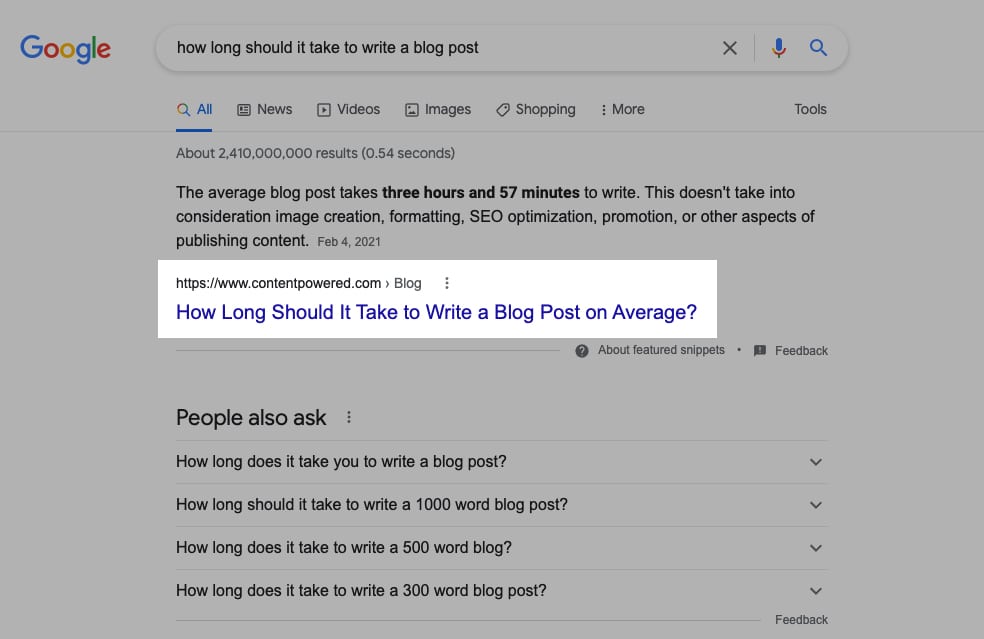
If you produce a piece of quality content with a much narrower but deeper emphasis, you can earn the featured snippet and have a higher organic position than those industry giants.
For an example of that traffic drop phenomenon, look into the "lyrics problem" that Google has faced in the past.
If you don't know, the lyrics problem is where Google gives them to you when you search for the lyrics. In the past, Google was caught multiple times copying lyrics from lyric sites like Genius rather than finding a way to obtain them independently.

The problem isn't that search engines are providing the lyrics; the problem is that when they deliver the songs, searchers have no reason to go to a lyric site, so the entire genre of websites no longer has a reason to exist.
Featured snippets get around this problem by only providing a small amount of information, enough to entice you to click through (or ignore a result for not having what you want) rather than reproduce the whole thing.
Google had some similar troubles with their embeds of infoboxes relating to movie info (from IMDB) or any Wikipedia article.
Another issue is that your organic result gets demoted if you earn a featured snippet. This phenomenon was confirmed by Danny Sullivan back in 2020, and there's no reason to believe it's any different now.
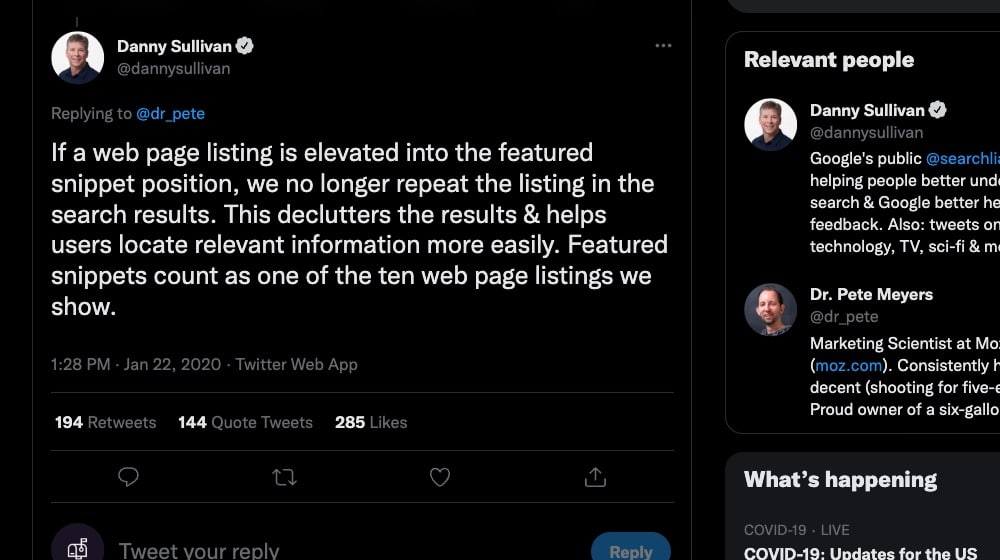
It's not removed entirely, but it's often pushed to page two or lower, so it might as well be.
So, featured snippets can benefit users, but they can harm some websites since many users will find the information they need in the snippet and have no further reason to click through to look at the rest of your website. In short, snippets are a land of contrasts.
How to Earn a Featured Snippet
Featured snippets come from the first page of Google, so to earn a featured snippet, your web page needs to be good enough to rank at the top of the Google results page in the first place.
As with many aspects of Google, there's a certain amount of "Black box" technology. Again, here's what Google says:
"Featured snippets come from web search listings. Google's automated systems determine whether a page would make a good featured snippet to highlight for a specific search request. Your feedback helps us improve our search algorithms and the quality of your search results."
The answer to the question "how can you request a featured snippet?" and the answer is a simple "you can't." You can opt-out of featured snippets by using the data-nosnippet tag on individual sections, or <meta name="robots" content="max-snippet:0"> on the entire page, but that's it. Google also has more documentation available for web admins.
Featured snippets can be removed because they violate policies or because user feedback deems them irrelevant, but otherwise, there's very little control over them available to you.
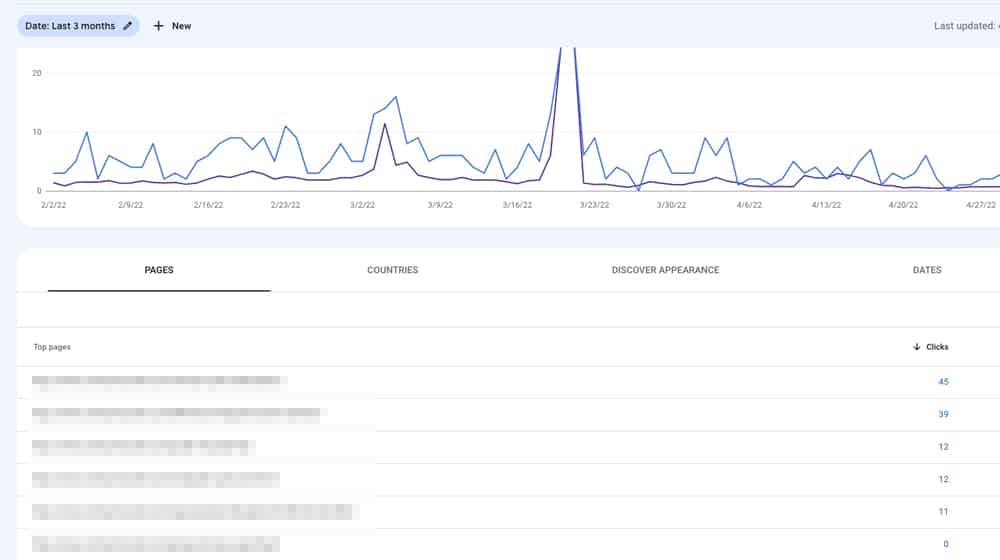
There are no editing tools or snippet optimization available for results that are automatically chosen. It's almost entirely just Google's algorithms and the occasional spot-check verifying that they work and are accurate.
If you want your site to get a featured snippet, you can use some SEO strategy to raise the odds, but you can't guarantee it.
How to Maximize the Chances of a Featured Snippet
Featured snippets are almost always informational, so you can start by discarding thoughts of getting featured snippets for buyer intent queries. Those queries are usually packed with snippets for store product listings and other shopping results anyway.
Most featured snippets are one of four different kinds of information.
- A brief paragraph or segment of an article that directly answers the question in the query.
- A numbered list or bulleted list that indicates that the content will answer the question.
- A table of information that answers the query question.
- A video that discusses the question and answers it.
So, this provides you with an "easy" step-by-step process for increasing your featured snippet opportunities.
1. Identify keyword queries in your niche that have featured snippets.
Not all queries get snippets; most of them don't get any. I would venture to guess that there's something like an 80/20 rule in effect, or even just a "top 1%" rule, depending on how Google is organizing it all on the back end. They only give snippets to queries that are informational or instructional. Most of the time, they don't do commercial, overly general, or with action intent queries. Some have unique types of knowledge panels, while others don't get anything.
Most of the time, Google will also only focus on featured snippets for queries that get a lot of traffic and search volume. Lower-interest questions may be less likely to get snippets.
So, the first thing you need to do is a complete rundown and audit of your target keywords and the keywords used in your industry, looking for any that have featured snippets.
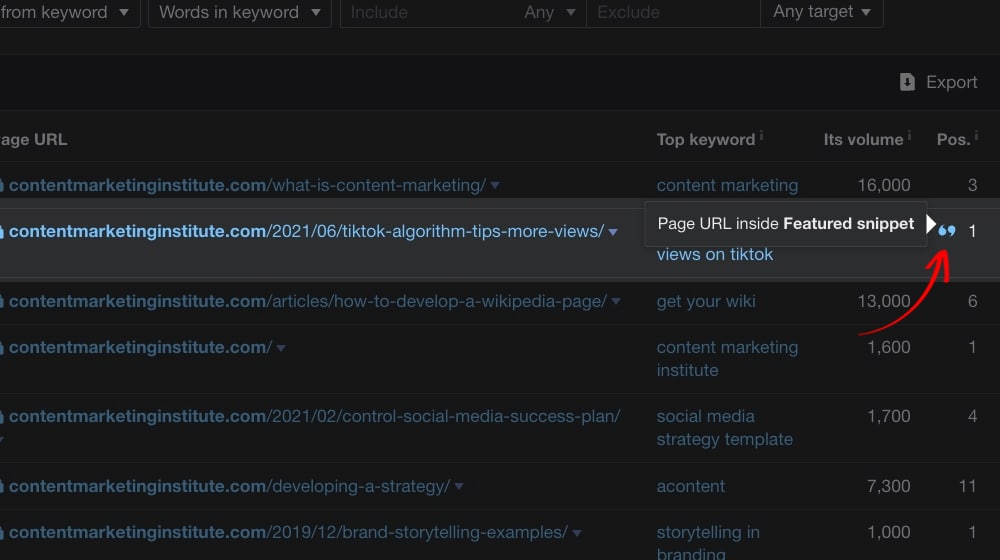
Some long-tail keyword research tools, like Semrush or Ahrefs, will give you this flag when you pull content on their website. Or, you can search manually.
2. Identify the question being asked and the kind of media provided in the snippet.
Once you've identified the queries that have featured snippets, you can do research. What is the specific question being answered? Can you potentially provide a better answer? What does the entire content that the snippet comes from look like?
Your goal is to identify the question-and-answer pairing, so you can mimic and replicate it in your content. Featured snippets tend to be very narrow and very well-targeted towards the subject of the query, so there isn't going to be much room for variation. Think of it almost like an exact match keyword; you may not get the snippet if your content doesn't include the exact match.
You need to understand the intent of the user's query. Do they want a simple answer to a question, or do they want a comparison chart? Do they want an instructional guide to accomplishing a task? Do they want a list of options?

It helps to put yourself in the user's shoes. Are they on their mobile, or are they using a voice search? Are they looking for an ultimate guide, or a quick "Yes or no" answer to a simple question?
You can provide it to them when you understand what they want, and Google will generate the snippet based on that alignment.
3. Produce your version of the media, narrowly targeted to earn the snippet.
Once you know what the snippet should contain, it's just a matter of creating it. Simple, right?
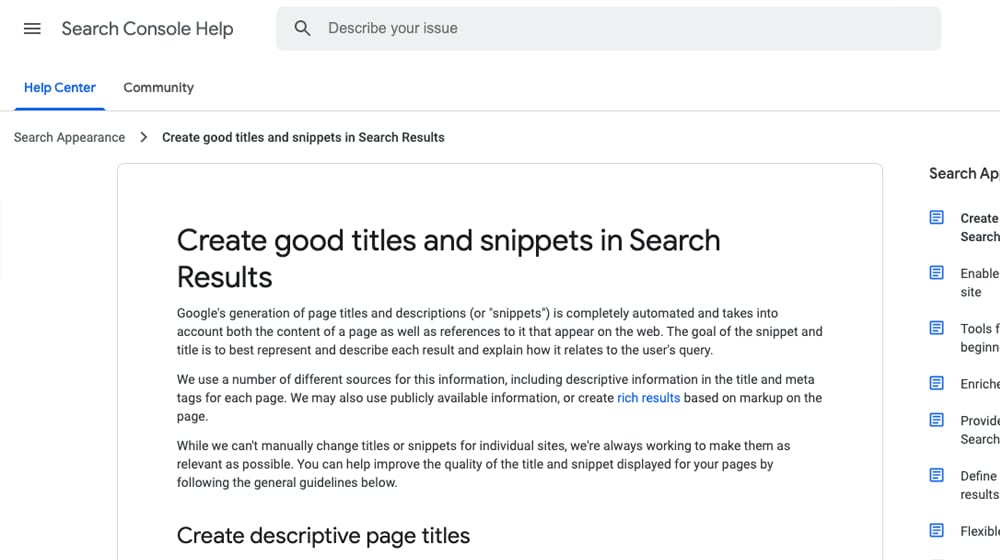
Well, you need to:
- Create a strong and relevant title for your page. There used to be a page on Google a couple of years ago about this, but it has since been deleted. You can find an archived version of it here.
- Create the core piece of content the snippet centers around.
- Create an entire piece of content surrounding it.
- Make sure that piece of content out-performs the competition, specifically whoever has the snippet currently.
- Emphasize the information the snippet would pull to make it crystal clear that this is the information Google should pick up.
Other than the narrow target and purpose, this is just content marketing when you're trying to out-do whatever your competition is doing.
Those two things are:
- 1. Publish your video on YouTube. While Google will rarely pull a video snippet from another video host, I would venture to say that well over 99% of them are YouTube results.
- 2. Upload a transcript. Google doesn't index the video content directly for a snippet; they index the transcript you upload that contains the content of the video. Now, I can't confirm this first-hand, but I would venture to guess that if a video doesn't have a transcript uploaded, it's probably not going to get a snippet.
If you're aiming for the table of information snippets, you should have a table of relevant information. It's all about aligning content to intent.
Check Your Existing Snippets
Here's a fun fact:
If you find that you already have featured snippets, you have an opportunity to buff up those pieces of content. Be careful about editing the content of the featured snippet, though; if you change it too much, Google might decide it's no longer relevant and give the snippet to someone else.
On that note, featured snippets may not last forever. Some featured snippets may only stay for a few hours or a few days and then disappear.
They may even be used for something like the "Honeymoon effect", where marketers theorize that Google occasionally elevates promising new results to gather user data. This brief surge in traffic helps them quickly gather data and various signals from users to determine quality and engagement. John Mueller of Google seems to (partially) confirm this theory in this timestamped video:
You can also check to see if the featured snippet is accurate. Sometimes, Google gets it wrong. In those cases, you may want to either submit feedback on it (and risk the snippet being removed) or edit the content to provide a more accurate snippet. Sometimes, you can rearrange H tags and formatting to emphasize the right content better.
Snippets change, and content changes. Your competitors might snipe snippets out from under you, or you might earn snippets passively as Google expands what queries they decide to include in these featured snippets. Tertiary page SEO factors are also relevant; user experience, backlinks, good PageSpeed metrics, optimized headings and subheadings, and high-quality visuals play a role in your organic performance. As with most parts of marketing, keep on top of it and monitor the state of snippets. You should also periodically re-check your content.
Snippets are worth aiming for; they're hugely valuable as an "organic" way of getting a high Google SERP, even above sites you would typically never out-rank. Most of your featured snippets that you'll secure on your site will be happy accidents, but by better understanding how they work and how they're earned, you can put yourself in a better spot to potentially achieve more of them in the future.
Have you had any luck earning featured snippets with a specific method? Are you struggling to achieve featured snippets on your content, or do you not have any yet? Do you have any questions for me about these? Please let me know in the comments below, and I'll get back to you quickly with an answer! I work with hundreds of different blogs and see new featured snippets every week; I'd be happy to point you in the right direction.



 30 Second Summary
30 Second Summary

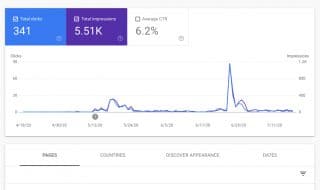

Comments